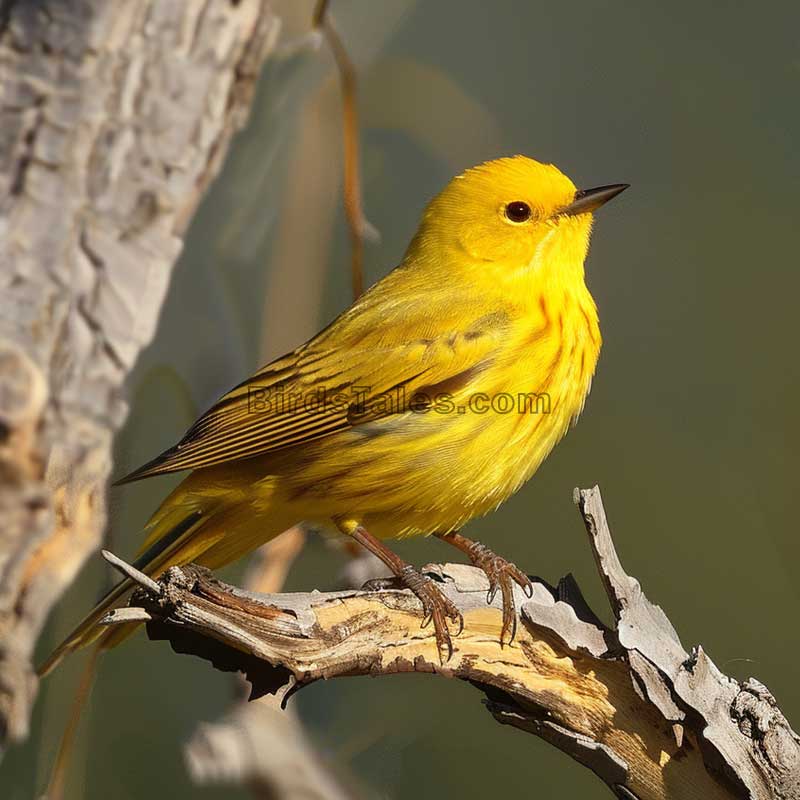Spring Migration: Northward Journey
Spring signals a great move for warblers.
These small birds embark on an incredible trip northward.
They leave Central and South America, aiming for North America.
It’s a spectacle of nature that happens each year.
Timing and Destinations
The timing of this trip is key.
Warblers start their northward journey around April.
By May, they reach their breeding grounds.
These areas stretch across North America.
From the southern U.S. to the northern regions, warblers set up their breeding territories.
It’s fascinating how these birds know the perfect time to start their journey.
Fueling Up: Diet and Energy
Warblers need a lot of energy for their migration.
Their diet mainly consists of insects.
As trees begin to bud, insects become abundant.
Warblers feast on them to build up fat reserves.
This fat is their fuel for the long trip ahead.
It’s amazing how these tiny birds manage such a feat with such a simple diet.
Fall Migration: Southward Return
As summer ends, warblers prepare for their return south.
This journey back to Central and South America usually occurs between August and September.
They leave their breeding grounds and head to their winter homes.
Preparing for the Journey
Preparation is crucial for fall migration.
Warblers undergo a significant change in appearance.
They molt into drab winter plumage, which helps them blend into their surroundings.
Accumulating fat reserves becomes their main focus.
They need this energy to sustain their long journey back south.
It’s like gearing up for a marathon, but for birds.
Migration Routes and Navigation
Warblers are expert navigators.
They travel thousands of miles, often at night.
They use the stars, the sun, and Earth’s magnetic field to guide them.
It’s incredible to think how they manage to stay on course.
Flying high above the ground helps them conserve energy.
Warblers often travel in mixed flocks, which adds another layer of safety and efficiency to their migration.
Notable Warbler Species
Several warbler species are known for their impressive migration patterns.
Each species has unique traits and behaviors that make their journeys interesting to observe.
Yellow Warbler
The Yellow Warbler is a standout among warblers.
In spring, they are one of the first to migrate north.
They reach the southern U.S. in March and early April.
By May, they are setting up breeding territories across the northern parts of the continent.
These birds are bright lemon-yellow, making them easy to spot.
Their sweet-sweet-I’m-so-sweet song is a common sound during this period.
Mixed Flocks During Migration
Warblers often migrate in mixed flocks.
This behavior has several benefits.
Traveling in groups provides safety from predators.
It also makes finding food easier.
Different warbler species can share resources and protect each other during the long journey.
It’s like a bird version of a road trip, with everyone looking out for one another.
Ecological Importance
Warbler migration is more than just a spectacle.
It plays a crucial role in the ecosystem.
These birds help maintain ecological balance and contribute to various environmental processes.
Role in Ecosystems
Warblers play a key role in controlling insect populations.
As they migrate, they consume large numbers of insects.
This helps keep insect populations in check, benefiting the entire ecosystem.
Their interactions with other species also contribute to ecological balance.
Warblers are an integral part of the food web, connecting various elements of the ecosystem.
Migration Challenges and Conservation
Migration is not without its challenges.
Warblers face numerous threats, including habitat loss and climate change.
These factors can disrupt their migration patterns and affect their survival.
Conservation efforts are vital to protect these birds and their habitats.
Initiatives like habitat restoration and legal protections can make a significant difference.
It’s important to support these efforts to ensure the survival of warblers.
Conclusion
Warbler migration is a remarkable natural phenomenon.
These small birds undertake incredible journeys twice a year, traveling thousands of miles.
Their migration is driven by the need to breed and find food.
Warblers are essential to maintaining ecological balance.
Conservation efforts are crucial to protect these birds and their habitats.
| Migration Period | Northward (Spring) | Southward (Fall) |
|---|---|---|
| Months | April – May | August – September |
| Key Diet | Insects | Insects, fat reserves |
| Navigation Tools | Stars, sun, magnetic field | Stars, sun, magnetic field |
| Plumage | Bright (males) | Drab (both sexes) |
Remember: Warbler migration is not just a natural marvel but also an essential ecological event.
Supporting conservation helps maintain this delicate balance.
